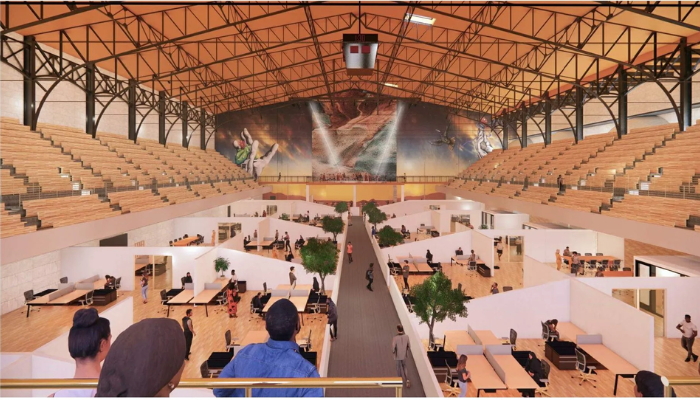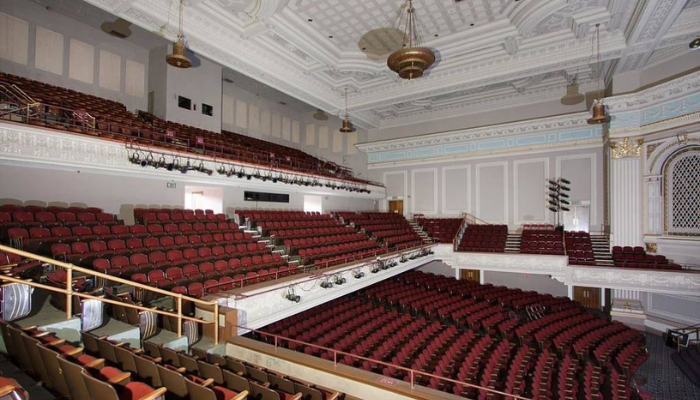
The henry kaiser convention center stands as a historic gem in the heart of Oakland, California. This iconic structure, with its rich history and stunning Beaux-Arts architecture, has been a pivotal hub for cultural, political, and entertainment events for over a century. After years of closure, it is undergoing an exciting transformation to restore its grandeur and redefine its role in the community. Whether you’re an architecture enthusiast, history buff, or simply curious about Oakland’s evolving landmarks, this article explores the past, present, and future of the Henry Kaiser Convention Center.
The History and Legacy of the Henry Kaiser Convention Center
The Henry Kaiser Convention Center was originally known as the Oakland Municipal Auditorium when it first opened in 1914. Designed by prominent architect John J. Donovan, the building quickly became a centerpiece for civic gatherings, concerts, and sports events. It has hosted legendary figures such as Martin Luther King Jr., Elvis Presley, and the Grateful Dead, making it an essential part of Oakland’s cultural landscape.
In 1984, the center was renamed after industrialist and philanthropist Henry J. Kaiser, who played a crucial role in the city’s economic development. The venue remained active until 2005, when it was shuttered due to budget constraints. Despite its closure, the center remains a beloved landmark, inspiring efforts to restore and repurpose the space for modern community use.
Architectural Significance and Design Features
The Henry Kaiser Convention Center is an architectural marvel, embodying the grandeur of the Beaux-Arts style. The exterior features a symmetrical façade, large arched windows, and ornate detailing that reflect early 20th-century design principles. The structure was built using reinforced concrete, a novel construction method at the time, ensuring durability and longevity.
Inside, the center boasts the grand Oakland Auditorium, a large multi-purpose hall with a seating capacity of over 5,000. Additionally, the Calvin Simmons Theatre, named after the late conductor of the Oakland Symphony Orchestra, provides an intimate setting for performances and cultural events. The combination of classic aesthetics and functional design has made the Henry Kaiser Convention Center a standout venue in the Bay Area.
The Center’s Cultural and Civic Impact
For decades, the Henry Kaiser Convention Center served as Oakland’s primary venue for large-scale events, hosting concerts, political rallies, and sporting competitions. From the roaring jazz era to the counterculture movement of the 1960s, the center has witnessed pivotal moments in American history. Notably, Dr. Martin Luther King Jr. delivered a powerful speech here in 1962, reinforcing the venue’s significance in the civil rights movement.
Beyond entertainment and politics, the center also played a role in civic life, hosting graduation ceremonies, public forums, and community celebrations. Its ability to bring people together from different walks of life has cemented its legacy as an invaluable part of Oakland’s identity.
Revitalization Efforts and Future Plans
After being dormant for over a decade, the Henry Kaiser Convention Center is undergoing a significant revitalization. The City of Oakland has partnered with local developers to transform the space into a mixed-use cultural hub while preserving its historical integrity. Plans include restoring the auditorium for performances, creating office spaces for arts organizations, and opening public areas for community engagement.
The renovation aims to blend historic preservation with modern functionality. Sustainable building practices will be incorporated to ensure energy efficiency, while the addition of flexible event spaces will accommodate a variety of cultural and artistic endeavors. The reimagined center is expected to serve as a catalyst for economic and cultural growth in Oakland.
How the Revitalization Benefits Oakland’s Community

The revival of the Henry Kaiser Convention Center is a significant milestone for Oakland’s cultural and economic landscape. By restoring this historic venue, the city aims to provide a dedicated space for local artists, musicians, and entrepreneurs. The new development will create jobs, attract tourism, and offer a platform for creative expression, fostering a thriving arts scene in the East Bay.
Furthermore, the center’s transformation aligns with Oakland’s commitment to historic preservation and urban revitalization. By maintaining its architectural charm while introducing contemporary amenities, the project bridges the past with the future, ensuring that the Henry Kaiser Convention Center remains a vibrant landmark for generations to come.
Conclusion
The Henry Kaiser Convention Center is more than just a historic building; it is a testament to Oakland’s rich cultural heritage and its vision for the future. Through thoughtful restoration and adaptive reuse, this iconic venue is set to reclaim its status as a hub for artistic and civic engagement. As the city embarks on this ambitious journey, the revitalized Henry Kaiser Convention Center will once again stand as a beacon of creativity, community, and progress in the heart of Oakland.
FAQs
1. What is the Henry Kaiser Convention Center?
The Henry Kaiser Convention Center is a historic event venue in Oakland, California, known for hosting concerts, political speeches, and cultural events.
2. When was the Henry Kaiser Convention Center built?
The building was constructed in 1914 and originally named the Oakland Municipal Auditorium.
3. Why was the Henry Kaiser Convention Center closed?
The venue closed in 2005 due to financial constraints and lack of funding for maintenance.
4. What events were held at the Henry Kaiser Convention Center?
Notable events include speeches by Martin Luther King Jr., concerts by the Grateful Dead, and numerous civic gatherings.
5. What are the architectural features of the Henry Kaiser Convention Center?
It features Beaux-Arts architecture, grand arched windows, an expansive auditorium, and the Calvin Simmons Theatre.
6. What is the current status of the Henry Kaiser Convention Center?
The building is undergoing a revitalization project to transform it into a cultural and community hub.
7. Who is Henry Kaiser, and why was the center named after him?
Henry J. Kaiser was an industrialist and philanthropist who significantly contributed to Oakland’s economic and industrial development.
8. What will the renovated center be used for?
The revitalized center will host performances, office spaces for arts organizations, and community events.
9. How will the revitalization impact the Oakland community?
It will create jobs, support local artists, and provide a space for cultural and civic activities.
10. When is the Henry Kaiser Convention Center expected to reopen?
While timelines may vary, the reopening is anticipated within the next few years as restoration efforts progress.





